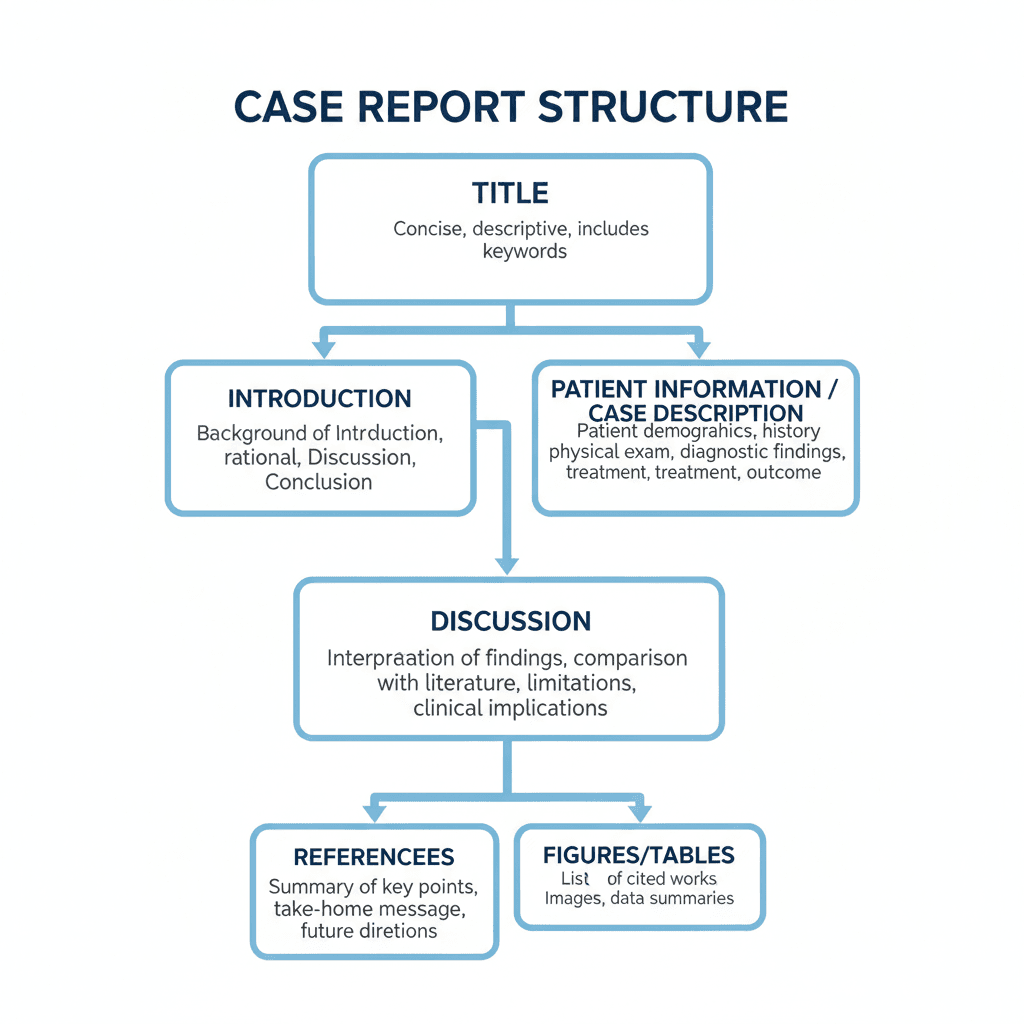How to Write a Case Report
Sep 15, 2025 | 4 min read
Case reports are an essential part of medical literature. They describe unusual cases, rare conditions, or innovative treatments in detail. While they may not rank high in the hierarchy of evidence-based research, their value lies in documenting unique clinical insights that can shape future studies or even influence medical practice. A well-written case report gives healthcare professionals and researchers an opportunity to share discoveries, stimulate discussion, and inspire further investigation.
This guide walks you through the purpose, structure, and step-by-step process of writing a compelling case report, while also highlighting common challenges and expert tips.
What is a Case Report?
A case report is a detailed description of a single patient case, covering presentation, diagnosis, treatment, follow-up, and lessons learned. Its main goal is to contribute new insights to medical literature by showcasing unusual or noteworthy cases.
- Rare diseases or syndromes.
- Atypical presentations of common conditions.
- Novel or unconventional treatment approaches.
- Unexpected side effects or adverse drug reactions.
- Diagnostic dilemmas requiring creative approaches.
- Unique anatomical variations and their clinical impact.
Clearly defining your case type at the outset helps shape the narrative and emphasize its significance.
Why Case Reports Matter
Even though case reports provide lower levels of evidence compared to large clinical trials, they remain important for several reasons:
- Hypothesis generation: They often spark new studies.
- Medical education: Excellent teaching tools for trainees and students.
- Personalized insights: Highlight how patient outcomes can differ.
- Early warnings: Rare drug reactions or new diseases are often first described in case reports (e.g., early HIV/AIDS cases).
When thoughtfully presented, case reports can pave the way for meaningful scientific progress.
Structure of a Case Report
Organizing your report clearly and logically is crucial. Most journals recommend the following format:
- Abstract (150–250 words): Briefly summarize the background, case highlights, and significance.
- Introduction: Explain the condition or context. Emphasize the novelty of the case. Clearly state the objective.
- Case Description: Patient details, clinical timeline, and follow-up.
- Discussion: Compare with similar cases or existing literature. Explore clinical implications. Acknowledge limitations.
- Conclusion: Summarize key lessons and relevance for practice or research.
- References: Use credible, up-to-date sources following journal guidelines.

Writing a Case Report: Step-by-Step
- Select a noteworthy case: Prioritize cases with unusual presentations, rare outcomes, or innovative treatments.
- Obtain patient consent: Always secure written informed consent and protect anonymity.
- Follow guidelines: Use frameworks like CARE (CAse REport) for structure and completeness.
- Simplify complexity: Be detailed but avoid unnecessary jargon; explain medical terms when needed.
- Use visuals: Tables, images, or graphs improve clarity.
- Revise thoroughly: Proofread and seek feedback from peers or mentors.

Common Challenges
- Patient privacy: Always anonymize identifiable data.
- Limited scope: Accept that a single case cannot be generalized—emphasize its educational or exploratory value.
- Choosing the right journal: Target journals that welcome case reports to increase chances of publication.
Pro Tips for an Excellent Case Report
- Highlight what makes your case unique.
- Present facts objectively, but interpret them carefully.
- Maintain consistency in writing style and formatting.
- Use CARE guidelines to ensure completeness.
- Conclude with practical insights or recommendations.
How Enago Can Help
Writing and publishing a case report requires precision, ethical diligence, and clarity. Enago’s expert editors provide tailored editing, proofreading, and journal submission support to ensure your report meets CARE standards and journal requirements—maximizing its impact and acceptance potential.
FAQs
Q1: What are the main steps in writing a case report?
Select a unique case, obtain ethical approval, and follow CARE guidelines. Structure the report into abstract, introduction, case description, discussion, and conclusion. Add visuals where appropriate and review thoroughly for clarity and accuracy.
Q2: How do I ensure patient consent and anonymity?
Always obtain written informed consent and remove any identifying details. Anonymize medical images and case data in line with institutional and legal privacy standards.
